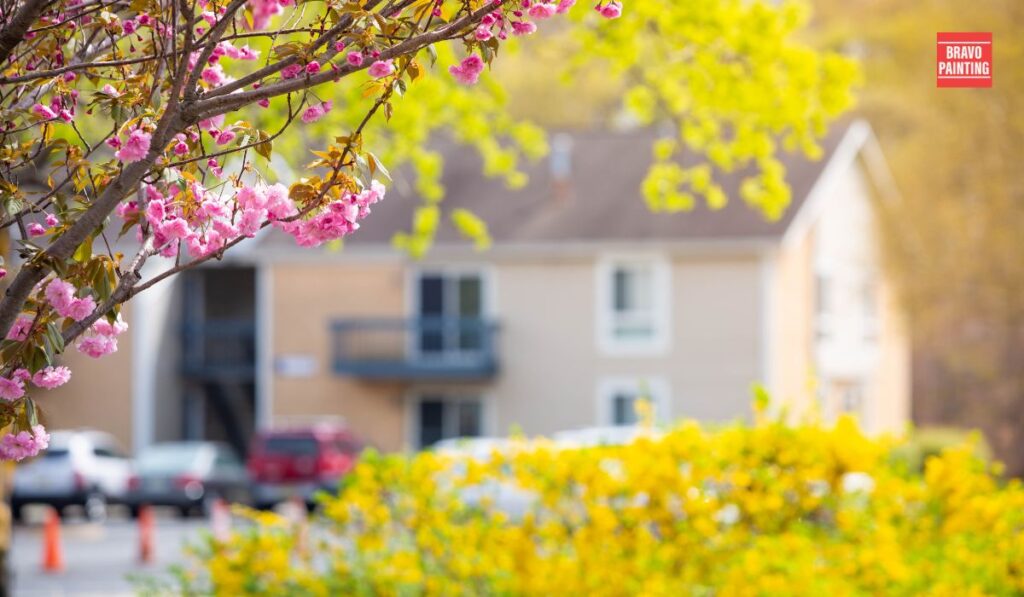Painting the exterior of your home can breathe new life into its appearance while also protecting the elements. However, timing is crucial to ensure the success of your painting project.
Factors such as weather conditions, temperature, and humidity can all impact the outcome of your paint job.
In this article, we will delve into the considerations for choosing the optimal time to paint the exterior of your home to achieve the best results.
Understanding the Influence of Weather:
Weather conditions play a significant role in the effectiveness and longevity of your exterior paint job.
Extreme temperatures, high humidity, rain, and direct sunlight can all affect the paint’s adhesion, drying time, and overall finish.
Therefore, it is essential to select a time when weather conditions are favorable for painting.
Selecting the Right Season:
The ideal time to paint the exterior of your home is during the spring or fall seasons.
During these times, temperatures are typically moderate, humidity levels are lower, and there is less chance of precipitation.
Avoid painting during the summer months when temperatures are high and humidity levels are elevated, as this can cause the paint to dry too quickly or not adhere properly.
Similarly, painting during the winter months is not recommended, as cold temperatures can hinder the paint’s ability to cure properly.
Monitoring Weather Forecasts:
Before embarking on your painting project, it is crucial to monitor weather forecasts closely.
Check for any anticipated rain, high winds, or extreme temperatures that could disrupt your painting schedule.
Ideally, aim for several consecutive days with mild temperatures and low humidity to create optimal conditions for painting.
Prepare the Surface:
Proper preparation of the surface is paramount to the success of your exterior painting project.
Before applying any paint, ensure that the surface is clean, dry, and free of any dirt, mildew, or loose paint.
Depending on the condition of your home’s exterior, you may need to pressure wash, scrape, sand, or prime the surface before painting.
Investing time in thorough surface preparation will result in better adhesion and a longer-lasting finish.
Consider the Sun’s Position:
When planning your painting schedule, consider the direction in which your home faces and how it receives sunlight throughout the day.
It is generally best to paint in the morning or late afternoon when the sun is less intense.
Painting in direct sunlight can cause the paint to dry too quickly, resulting in uneven coverage and brush marks.

Choose High-Quality Paint:
Selecting high-quality paint is essential for achieving professional-looking results and ensuring the longevity of your paint job.
Look for exterior paints that are specifically formulated to withstand the elements and offer features such as UV protection, mold resistance, and excellent adhesion.
While higher-quality paints may come with a higher price tag, they will ultimately save you time and money by requiring fewer coats and lasting longer.
Preparing for your exterior painting project may seem daunting, but following these steps can ensure a smooth and successful process.
Here are some additional tips to consider:
Plan Ahead: Before you begin painting, create a detailed plan outlining the steps you need to take, including surface preparation, paint selection, and scheduling.
Allocate sufficient time for each task to avoid rushing through the process.
Gather Supplies: Make sure you have all the necessary supplies and equipment on hand before you start painting.
This includes paint brushes, rollers, paint trays, masking tape, drop cloths, and any specialized tools needed for surface preparation.
Protect Surrounding Areas: Cover nearby plants, bushes, and surfaces with plastic sheeting or drop cloths to protect them from paint splatter and spills.
Use masking tape to protect windows, door frames, and other areas you don’t want to paint.
Work Safely: When working on ladders or scaffolding, always prioritize safety.
Ensure that your equipment is stable and secure, and wear appropriate protective gear such as gloves, goggles, and a dust mask.
Follow Proper Painting Techniques: Use long, smooth strokes when applying paint to achieve an even finish.
Start at the top of the house and work your way down, overlapping each stroke slightly to avoid visible lines or streaks.
Allow Sufficient Drying Time: Follow the manufacturer’s instructions regarding drying times between coats, and avoid touching or disturbing the paint until it has fully cured.
This will help prevent smudges and ensure a professional-looking finish.
Inspect and Maintain: Once the painting is complete, take the time to inspect the entire exterior of your home for any missed spots or imperfections.
Touch up as needed, and consider applying a clear sealant or topcoat for added protection and longevity.
By following these guidelines and paying attention to the optimal timing for your exterior painting project, you can achieve beautiful and long-lasting results that will enhance the appearance and value of your home for years to come.
Remember to take your time, prioritize proper preparation, and invest in quality materials for the best outcome. With careful planning and attention to detail, your home can become a standout in the neighborhood with a fresh coat of paint.
Conclusion:
Choosing the optimal time to paint the exterior of your home requires careful consideration of various factors, including weather conditions, temperature, humidity, and surface preparation.
By painting during the spring or fall seasons, monitoring weather forecasts, properly preparing the surface, painting during optimal sunlight conditions, and using high-quality paint, you can achieve a successful and long-lasting paint job that enhances the beauty and protection of your home’s exterior.
For professional exterior painting services and expert advice, visit Bravo Painting.
Their team of experienced painters can help transform your home with a fresh coat of paint, ensuring stunning results that stand the test of time.
FAQs
When is the best time to paint the exterior of my home?
The optimal time for exterior painting is during the spring or fall seasons. These seasons typically offer moderate temperatures, lower humidity levels, and minimal precipitation, creating ideal conditions for painting.
Why should I avoid painting during the summer or winter months?
Painting during summer can lead to quick drying of paint, causing issues like uneven coverage and brush marks. In winter, cold temperatures can hinder proper curing of the paint, affecting its longevity and finish.
How important is it to monitor weather forecasts before starting a painting project?
Monitoring weather forecasts is crucial to ensure that you have several consecutive days of mild temperatures and low humidity. This helps create optimal conditions for painting and prevents weather-related disruptions to your project.
What steps should I take to prepare the surface before painting?
Proper surface preparation is essential. Clean the surface thoroughly, remove any dirt or mildew, and ensure it’s dry and free of loose paint. Depending on its condition, you may need to pressure wash, scrape, sand, or prime the surface.
Why is it recommended to paint in the morning or late afternoon?
Painting during these times minimizes exposure to direct sunlight, which can cause the paint to dry too quickly. Rapid drying can lead to uneven coverage and brush marks, affecting the overall finish of the paint job.
What should I look for when selecting paint for my home’s exterior?
Choose high-quality exterior paints that are formulated to withstand the elements and offer features like UV protection, mold resistance, and excellent adhesion. Investing in quality paint ensures professional-looking results and longevity.
What additional tips can help ensure a successful exterior painting project?
Plan, gather all necessary supplies, protect surrounding areas from paint splatter, work safely on ladders or scaffolding, use proper painting techniques, allow sufficient drying time between coats, and inspect the finished paint job for any touch-ups or imperfections.
How can I maintain the freshly painted exterior of my home?
Regularly inspect the painted surfaces for any signs of wear or damage. Touch up any missed spots or imperfections as needed, and consider applying a clear sealant or topcoat for added protection and longevity.


